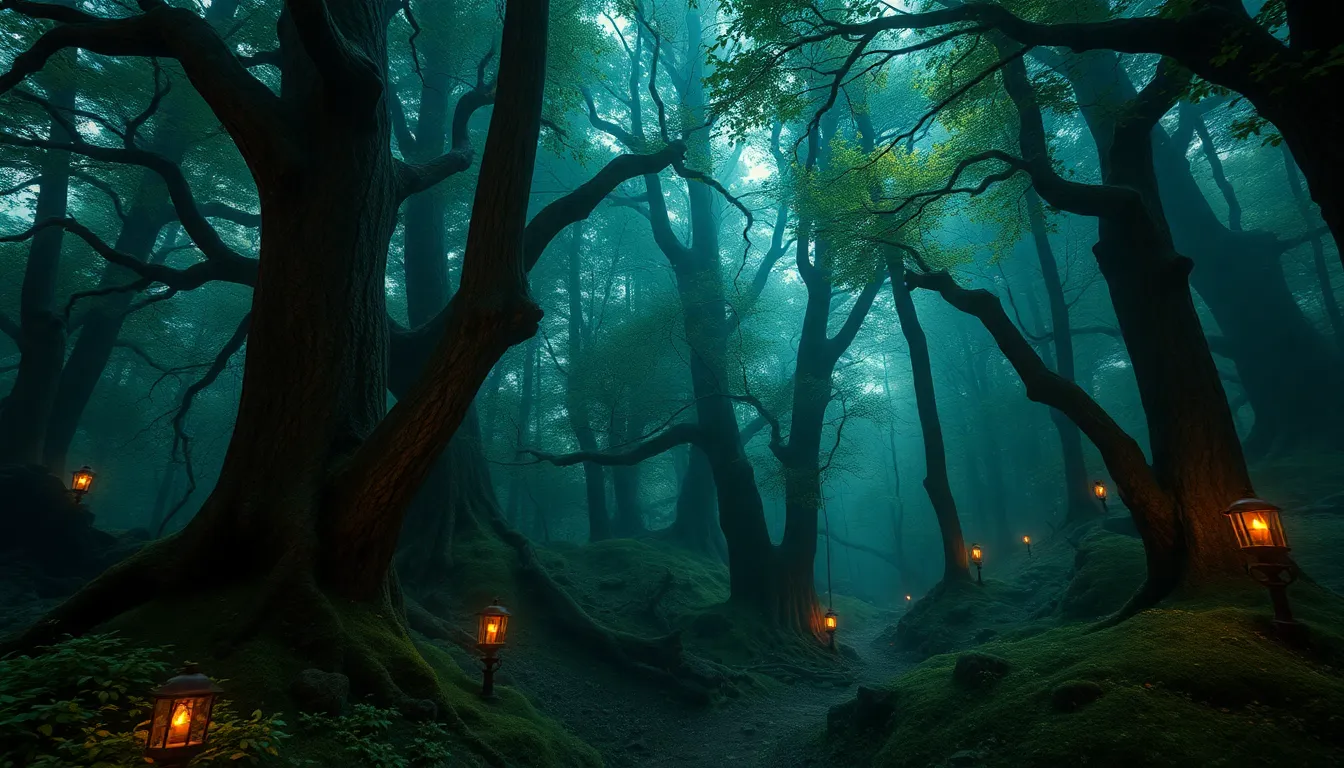Unraveling the Myths of Enchanted Forests: A Deep Dive
1. Introduction to Enchanted Forests
Enchanted forests are spaces that evoke a sense of magic, mystery, and wonder. These forests are often depicted in literature, folklore, and art as places where the ordinary meets the extraordinary. The cultural significance of enchanted forests spans across various civilizations and mythologies, often serving as a backdrop for tales of adventure, transformation, and the supernatural.
Common themes in mythology and folklore surrounding enchanted forests include the presence of magical creatures, the testing of heroes, and the exploration of the unknown. These elements not only captivate the imagination but also reflect deeper human fears and desires.
2. Historical Roots of Enchanted Forests
The origins of enchanted forests can be traced back to ancient civilizations, where forests were often seen as sacred spaces filled with divine presence. From the woodlands of Celtic mythology to the groves of Greco-Roman traditions, these natural landscapes played crucial roles in spiritual practices and storytelling.
Folklore has greatly influenced modern interpretations of enchanted forests. Stories passed down through generations have evolved, blending historical truths with fantastical elements, ultimately shaping our current understanding of these mystical places.
3. Common Myths and Misconceptions
One of the most prevalent myths surrounding enchanted forests is the existence of magical creatures such as fairies, elves, and spirits. These beings are often portrayed as guardians of the forest, embodying nature’s beauty and danger. However, the romanticized view of these creatures often oversimplifies the complex relationships between humans and the environment.
Another misconception is the ecological role of forests. While enchanted forests are depicted as mystical realms, they are also vital ecosystems that support biodiversity and contribute to the planet’s health. Understanding the ecological significance of forests can enrich our appreciation of their beauty beyond the myths.
4. The Symbolism of Enchanted Forests in Literature
Enchanted forests feature prominently in iconic literary works, serving as a powerful symbol of transformation and self-discovery. For instance:
- J.R.R. Tolkien’s The Lord of the Rings – The forests of Middle-earth, such as Lothlórien and Fangorn, are filled with ancient wisdom and serve as places where characters undergo significant personal growth.
- Lewis Carroll’s Alice’s Adventures in Wonderland – The forest represents a space of chaos and exploration, reflecting Alice’s journey of self-discovery and the absurdities of her environment.
- William Shakespeare’s A Midsummer Night’s Dream – The enchanted forest serves as a setting for magic and romance, where characters confront their desires and fears.
The forest as a setting not only enhances the narrative but also symbolizes the journey into the depths of the human psyche.
5. The Role of Nature in Enchantment
The connection between biodiversity and myth is deeply rooted in the perception of forests as enchanted spaces. The rich variety of flora and fauna within these environments often gives rise to stories and legends that emphasize their magical qualities.
Natural phenomena such as the play of light through trees, the sounds of rustling leaves, and the presence of unique wildlife contribute to the sense of enchantment. These elements create an atmosphere that can evoke feelings of awe, curiosity, and even fear, enhancing the mythical narrative surrounding forests.
6. Cultural Variations of Enchanted Forests
Enchanted forests vary significantly across cultures, reflecting regional beliefs and environmental factors. For example:
- European Folklore: Often features fairies and woodland spirits, emphasizing the harmony between nature and the supernatural.
- Asian Folklore: Includes tales of guardian spirits and mythical beasts, highlighting the forest’s role as a place of both refuge and danger.
The impact of geography on mythological narratives is profound, as different landscapes and ecosystems inspire unique stories that resonate with the local populace.
7. The Psychological Appeal of Enchanted Forests
Humans have an innate attraction to the concept of enchanted forests, which can be attributed to several psychological factors. The allure of these forests often lies in:
- Escapism: They provide a temporary retreat from the complexities of modern life, allowing individuals to immerse themselves in a world of enchantment and possibility.
- Curiosity: The mysterious nature of enchanted forests invites exploration and discovery, appealing to our innate desire to seek the unknown.
- Symbolism of Growth: Forests often represent a journey of personal growth and transformation, resonating with our own experiences of change.
8. Enchanted Forests in Modern Media
In contemporary media, enchanted forests continue to captivate audiences through various forms such as films, video games, and art. Notable examples include:
- Disney’s Frozen – The enchanted forest serves as a backdrop for themes of love, sacrifice, and self-discovery.
- Video Games like The Legend of Zelda – Enchanted forests are often central to gameplay, providing challenges and quests that drive the narrative.
- Art Installations – Artists often draw inspiration from enchanted forests, creating immersive experiences that evoke the magic of nature.
These representations highlight how contemporary narratives are reshaping the traditional myths, bringing new dimensions to the concept of enchanted forests.
9. Conservation and the Reality of Forests
While enchanted forests captivate our imagination, it is crucial to remember the importance of preserving real forests and their biodiversity. The myths surrounding enchanted forests can inspire environmental stewardship by:
- Encouraging conservation efforts aimed at protecting endangered ecosystems.
- Raising awareness about the ecological importance of forests in combating climate change.
- Promoting sustainable practices that honor the relationship between humans and nature.
10. Conclusion: Bridging Myth and Reality
Enchanted forests represent a fascinating intersection of myth and reality, inviting us to explore the depths of our imagination while grounding us in the ecological truths of our world. By unraveling the myths surrounding these magical landscapes, we gain insights into our relationship with nature and the importance of preserving these vital ecosystems for future generations.
The ongoing relevance of myths in understanding our connection to enchanted forests serves not just as a reminder of the magic within nature but also as a call to action to protect and cherish the real forests that inspire such awe and wonder.



